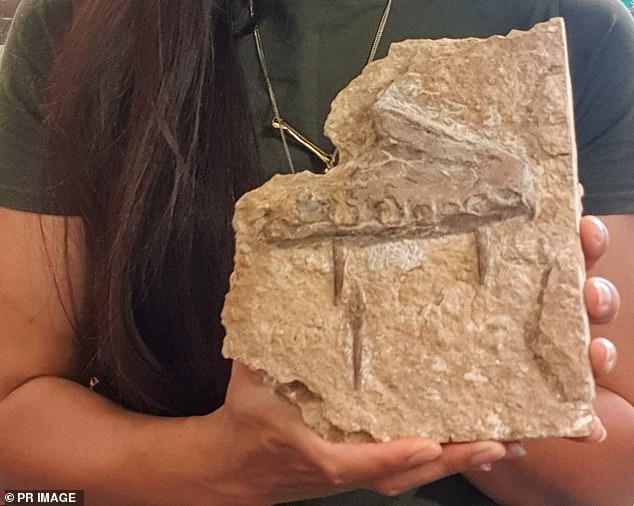The skeleton of a fearsome predator nicknamed the “demon pelican” has been unearthed, 100 million years after flying over the Australian outback.
The new species of pterosaur, a flying reptile that would have lived during the age of dinosaurs, was discovered outside the rural town of Richmond in western Queensland.
Adele Pentland, who led the Curtin University research team that identified the new species, said the creature had a wingspan of 4.6 metres.
“They have been described as some kind of demonic pelican,” he told AAP.
“They had these big jaws full of rows of spike-like teeth and the head of this animal would have been about 60 centimeters.”
Adele Pentland (pictured) says the flying reptile probably ate fish and squid-like creatures.

Fossilized 100-million-year-old remains of a flying reptile, described as a “demonic pelican,” have been discovered in outback Queensland.
The area where the fossilized remains were found was once covered by an inland sea, which Pentland believes would have been the pterosaur’s food source.
“It probably ate fish and squid-like creatures,” the Curtin University PhD candidate said.
“We found bones of plesiosaurs, marine reptiles, and surely many fish fossils have also been found in this way.”
The fossilized remains were unearthed by Kronosaurus Korner museum curator Kevin Petersen in 2021, and the Curtin University team identified them as Haliskia peterseni.
“I am delighted that my discovery is a new species, as my passion lies in helping to shape our modern knowledge of prehistoric species,” said Mr Petersen.
The skeleton is 22 percent complete, including the entire lower jaw, the tip of the upper jaw, 43 teeth, ribs, bones of both wings and part of the leg.
Pentland said it was the most complete pterosaur skeleton found in Australia.
“There is only one other partial pterosaur skeleton from Australia and it is 10 percent complete,” he said.
“Knowing that potentially more material is available if excavations continue… is an absolutely incredible feeling.”
Haliskia peterseni is on display at Kronosaurus Korner in the outback Queensland town of Richmond, which Pentland says would boost palaeotourism in the region.
“It’s just another amazing fossil that people can come see,” he said.
“The area has been affected by drought for a number of years, so the money coming into these small towns through tourism really makes a big difference.”

